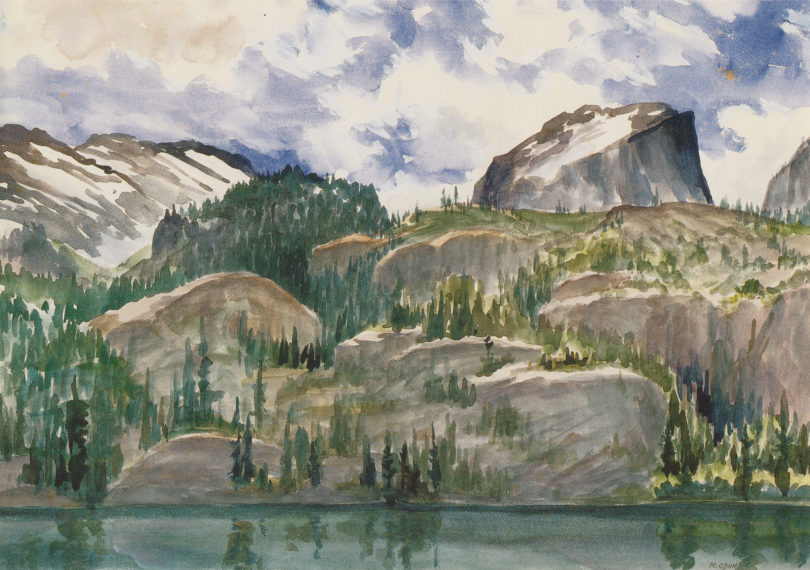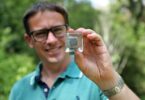Martha Odum carried a sketch pad, a box of watercolors and a vial of water everywhere she traveled with her husband, Eugene P. Odum, for whom the University of Georgia’s School of Ecology is named. Eugene Odum is often called the father of modern ecology, but it’s possible Martha was its mother, dotingly painting gorgeous portraits of her child. The Georgia Museum of Art at UGA will show some of those landscape paintings in the exhibition “Martha Odum: Art Intersects Ecology,” on view Oct. 7 to Dec. 31.
This exhibition celebrates the 50th anniversary of the ecology program at UGA, established as the Institute of Ecology in 1967 (it became a school in 2007). As Martha and Eugene Odum traveled the country to further Eugene’s scientific knowledge, Martha painted watercolors of the natural landscapes she observed. Her work highlights depleted resources in the South as well as the love of ecology and the environment that she and her husband shared. This exhibition includes both her paintings and silver hollowware that she created, which draws on natural forms. Together, they show just how much Odum revered the natural world.
UGA undergraduate student and Beard Scholar Victoria Ramsay served as curator for the exhibition, under the guidance of Dale Couch, the museum’s curator of decorative arts. Ramsay is the beneficiary of a scholarship established by Drs. Linda and Larry Beard, strong supporters of the museum’s commitment to the decorative arts. The scholarship provides a paid internship to undergraduates focusing on the decorative arts at the museum. Ramsay is one of the first two students to receive the scholarship.
In addition to Martha Odum’s paintings and silver, the exhibition includes other works from the museum’s collection to illustrate how human history has interacted with ecology over the years. One 19th-century painting shows the American shad, a fish native to Georgia that was overfished. A chair with a hide seat speaks to patterns of migration and cultural influence, as well as to the way in which the ecology of the region was changed by the trade in hides. Basketry made from river cane tells another story of loss, due to agricultural exploitation. Savannah River Valley pottery demonstrates adaptation to the resources available in the area. Each object shows the overlap of art and ecology. “Martha Odum: Art Intersects Ecology” is not only an expression of wonder in the face of natural structures and elements, but also an argument that these structures are worthy of being preserved.
Programs related to the exhibition include 90 Carlton: Autumn, the museum’s quarterly reception ($5, free for members of the Friends of the Georgia Museum of Art) on Oct. 13 at 5:30 p.m.
This exhibition is sponsored by the W. Newton Morris Charitable Foundation and the Friends of the Georgia Museum of Art.






